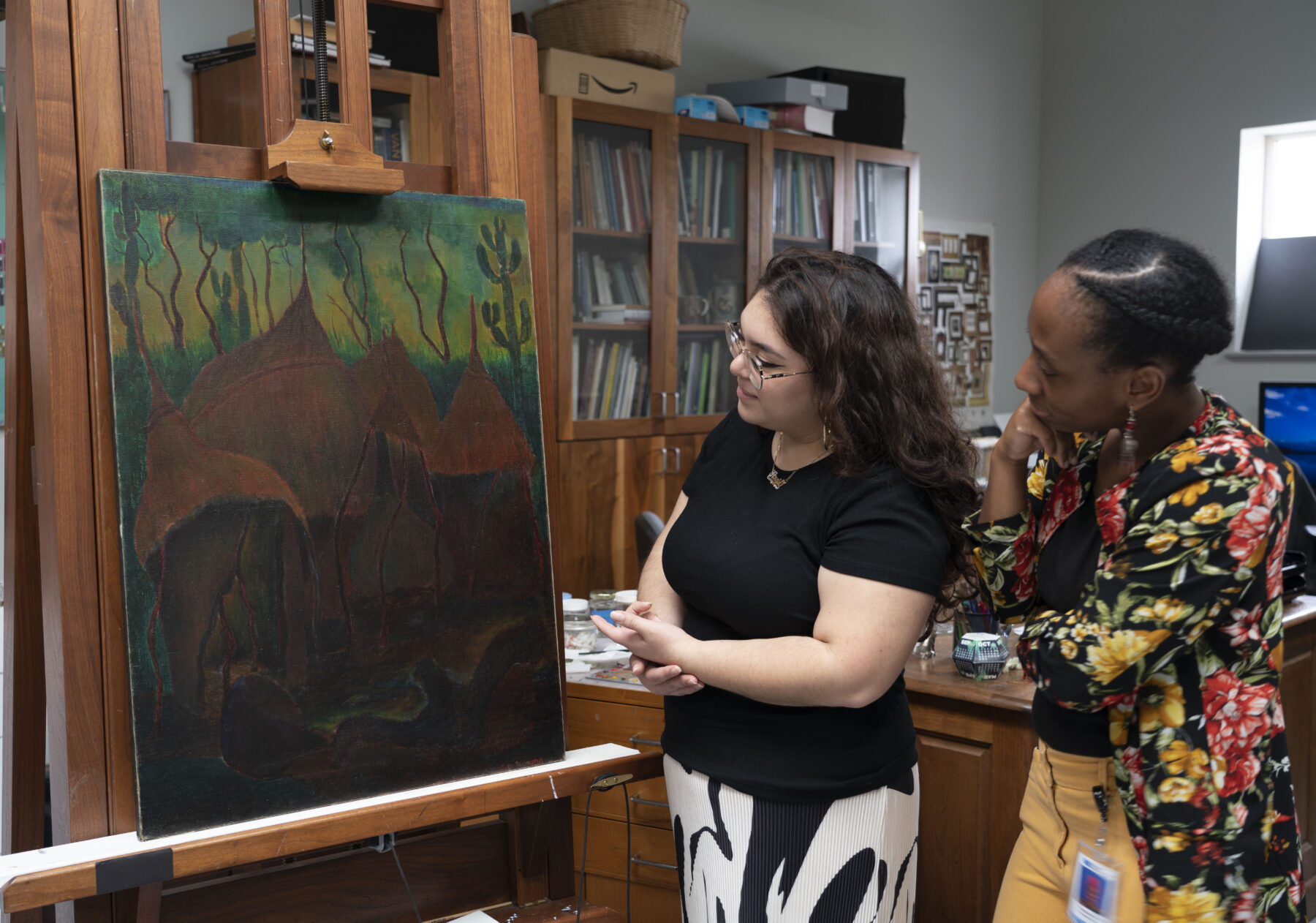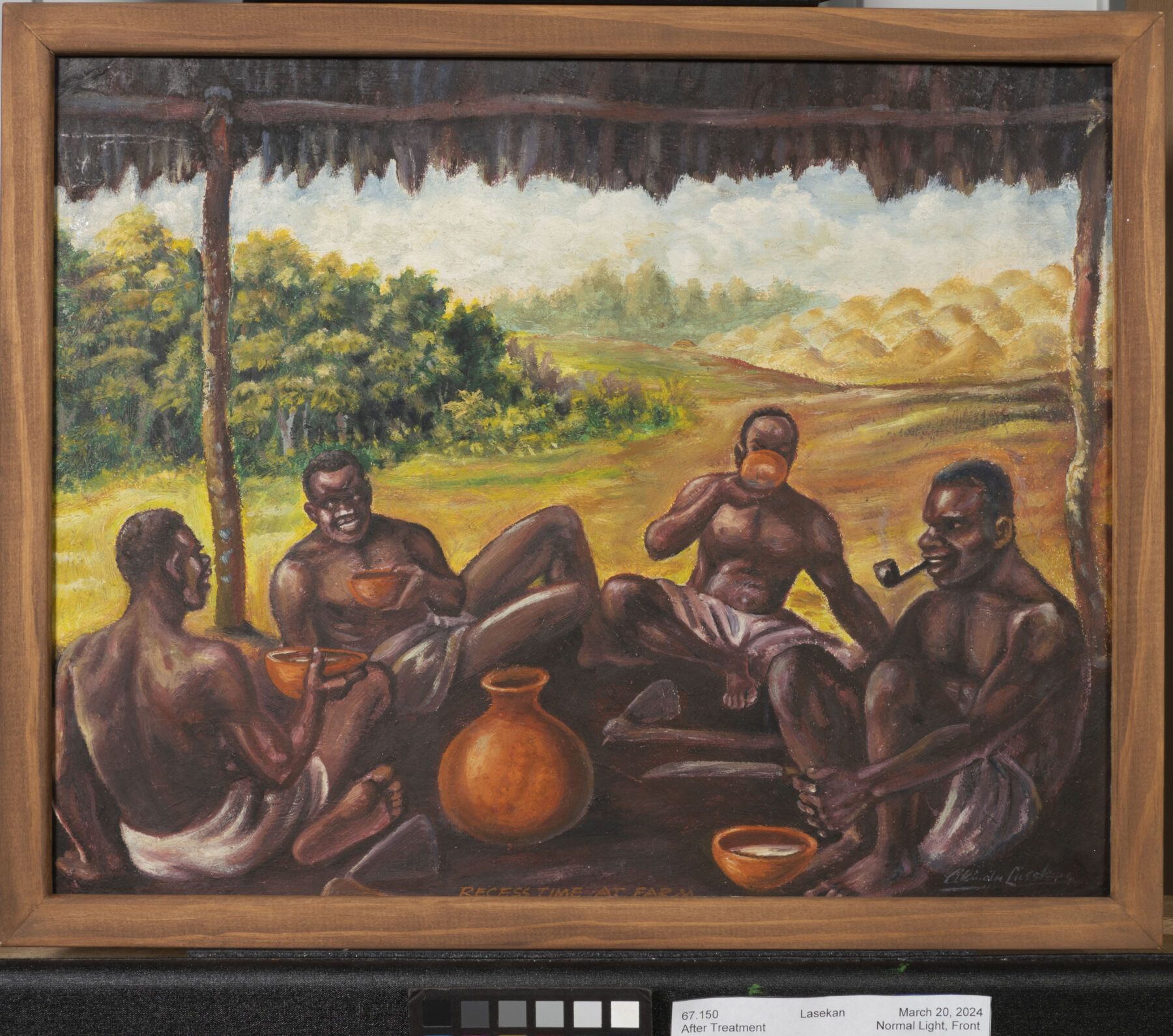The Dangers (and Usefulness) of Water


Vacuuming mold on the back of Hausa Trader by Akinola Lasekan (Nigerian, 1916-1972), Mid-20th century, Paint on Board, Gift of the Harmon Foundation, Hampton University Museum, 67.267
Water is a material which has the potential to both help and harm artworks. For example, conservators often use water-based solutions to clean paintings, or to humidify works on paper in order to flatten pieces which have distortions. In both of these cases, the application of water is very controlled and the water has usually been distilled to remove any impurities. However, the uncontrolled exposure of artworks to water can cause significant damages, and it is considered one of the ten Agents of Deterioration. Even oil paintings, which may not be thought of as being sensitive to water, can experience damaging effects due to the reactivity of their canvas or board supports to wet conditions.
Water Damaged Paper
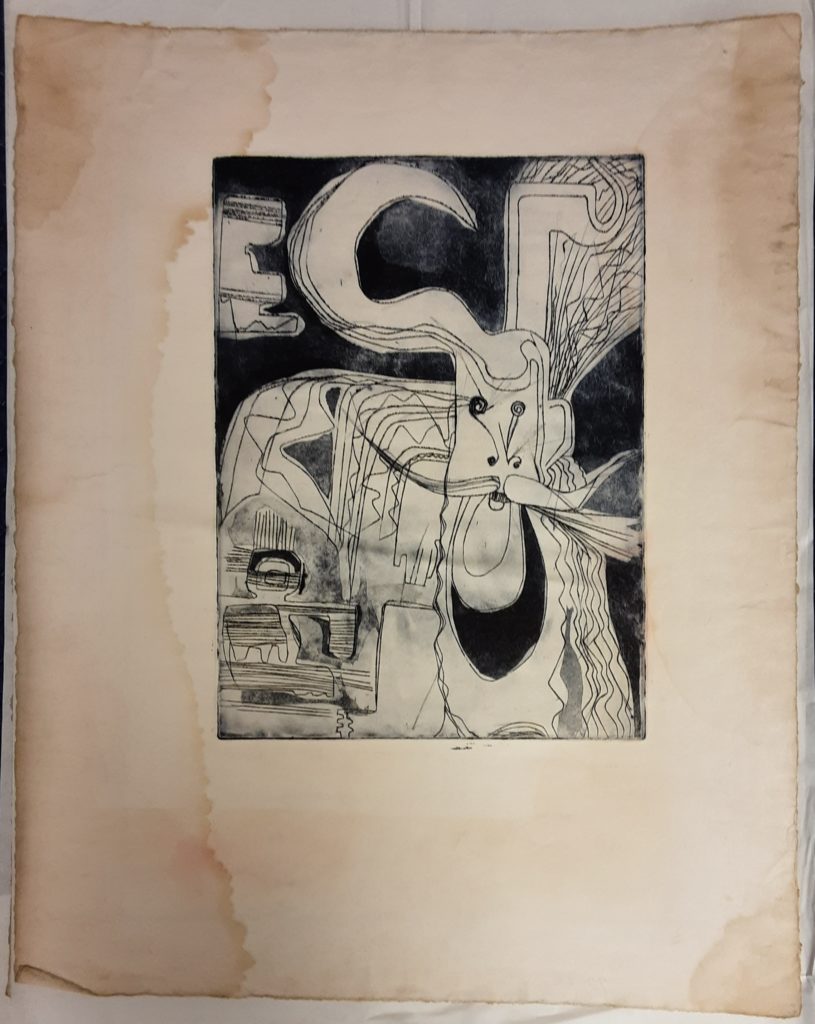
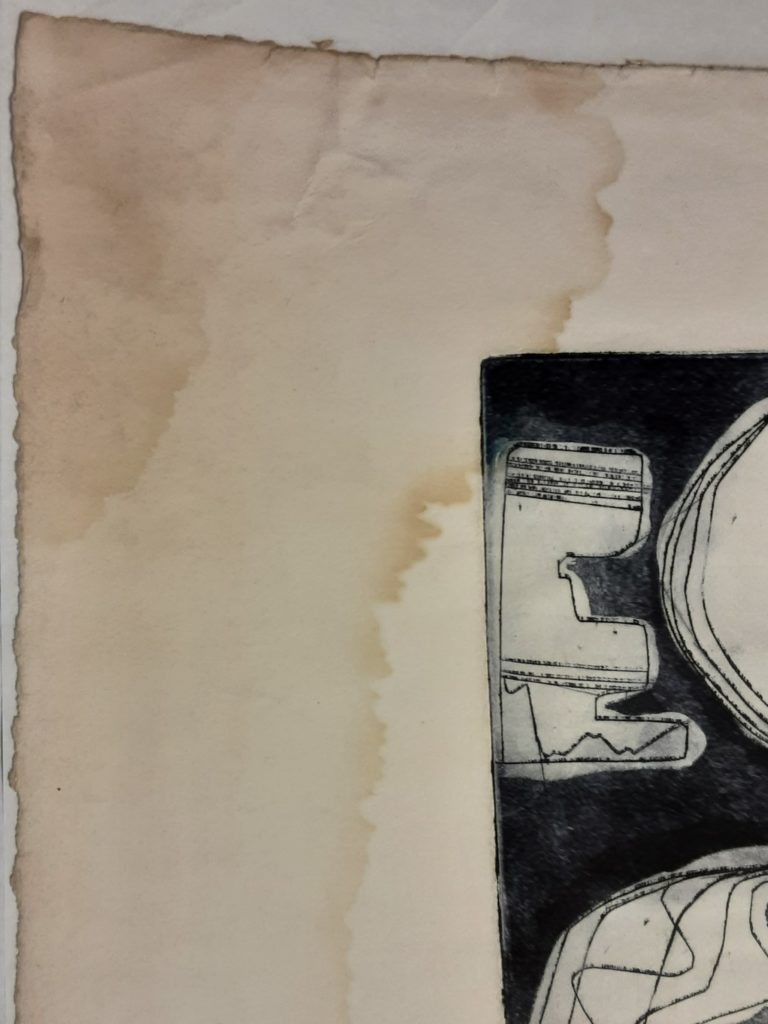
The paper artwork shown here has several darkened tidelines along the edges from past interactions with water. Water can cause internal and external materials, such as dirt and coatings, to move within the paper matrix, creating darkened lines where the water carried and deposited those materials in concentrated amounts. This particular object may have had multiple instances of water interaction, since there are two distinct lines near one of the upper corners. The uncontrolled drying of the piece after it got wet likely created the wrinkling along the opposite edge as well. When paper dries quickly or not under weights, it will deform. Conservators counteract this tendency by drying paper artworks between absorbent materials with weight on top.
Water Damaged Paintings
This painting has experienced water damage along the bottom edge, which is apparent from the darkened tidelines on the back, similar to the process described within the paper shown above. Both the canvas and the wooden stretcher contain dark tidelines. The paint along the bottom on the front also has several areas of flaking and loss. Most likely, the water caused the canvas fibers to expand, which shrunk the overall dimensions and led to fragments of the rigid paint layer “popping” off the surface. Water can also weaken the glue and ground layers, which are often water-based, causing instability and delamination of the paint.
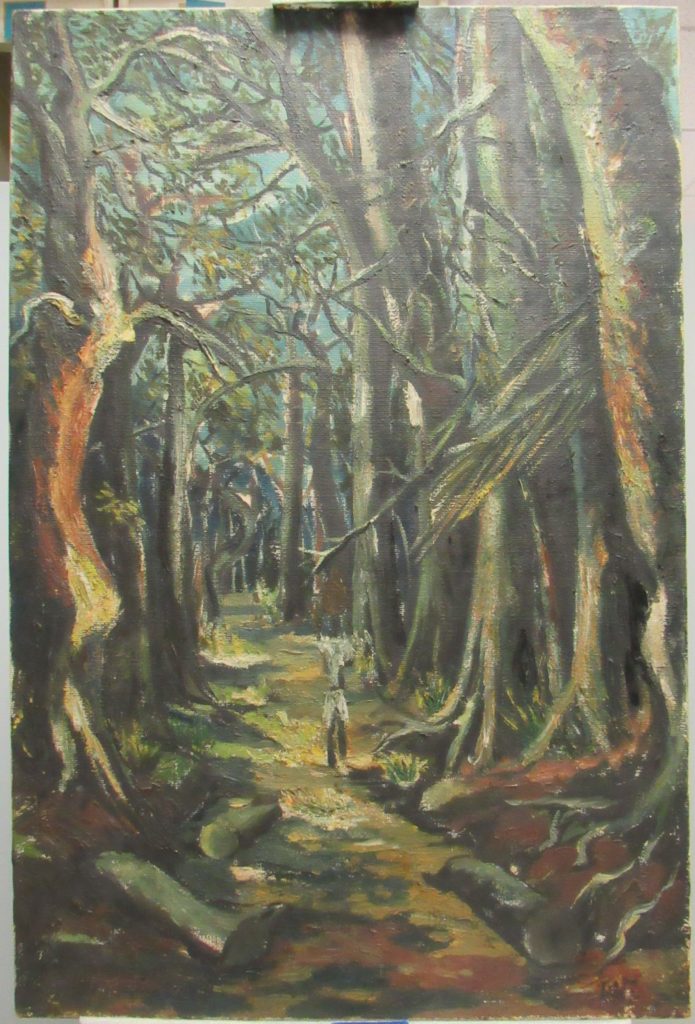
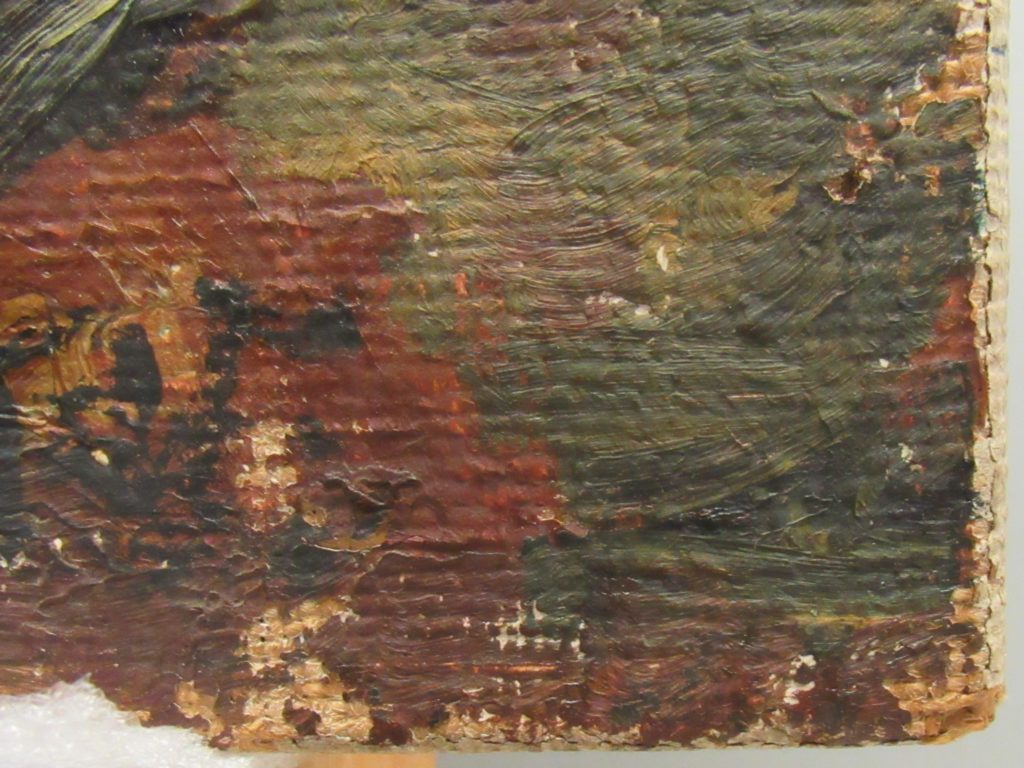

Dealing with Mold
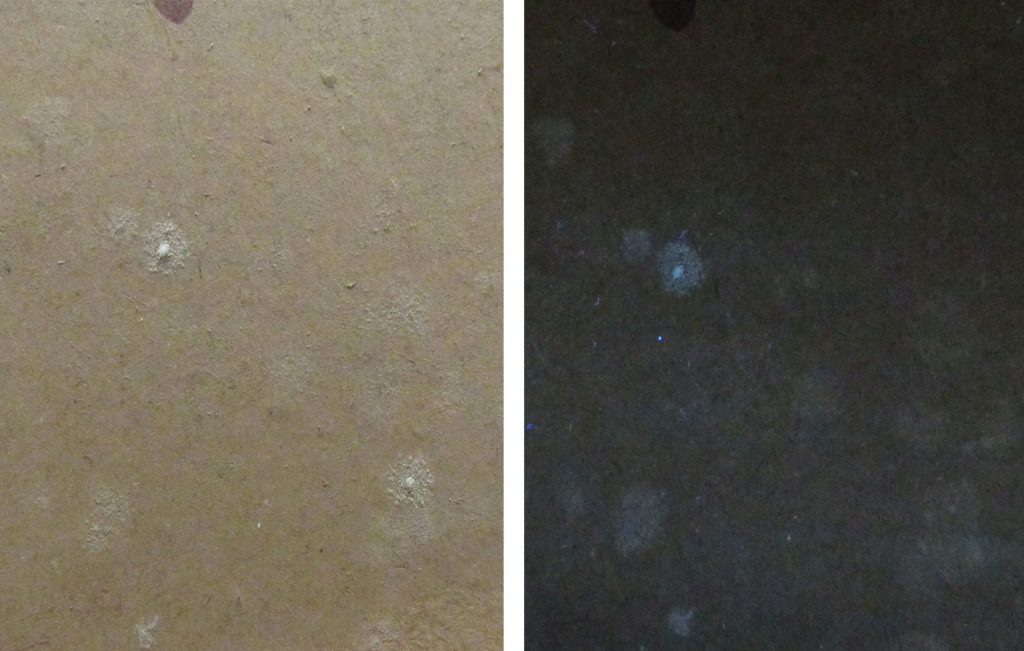
Another common side-effect of the interaction of artworks with water is the potential for mold growth. Mold spores are everywhere, in the air and even on our clothes, but they are usually kept inactive by the environmental conditions. Keeping the temperature below 75 degrees and the humidity between 40-60% prevents most mold from being able to grow and spread. Mold spores can adhere to almost any surface, especially if there is a build-up of dust present, and will become active when the relative humidity goes above around 70%. The detail images below show the appearance of white mold spores on the surface of a gouache painting on paper and the back of a painting on board. There are many different types of mold, but common characteristics to look for are a thicker “bud” at the center, with many fibrous “legs”. Mold also fluoresces under ultraviolet radiation (see above). Sometimes even when the bulk of the spores have been removed, the stains will still exhibit some fluorescence.
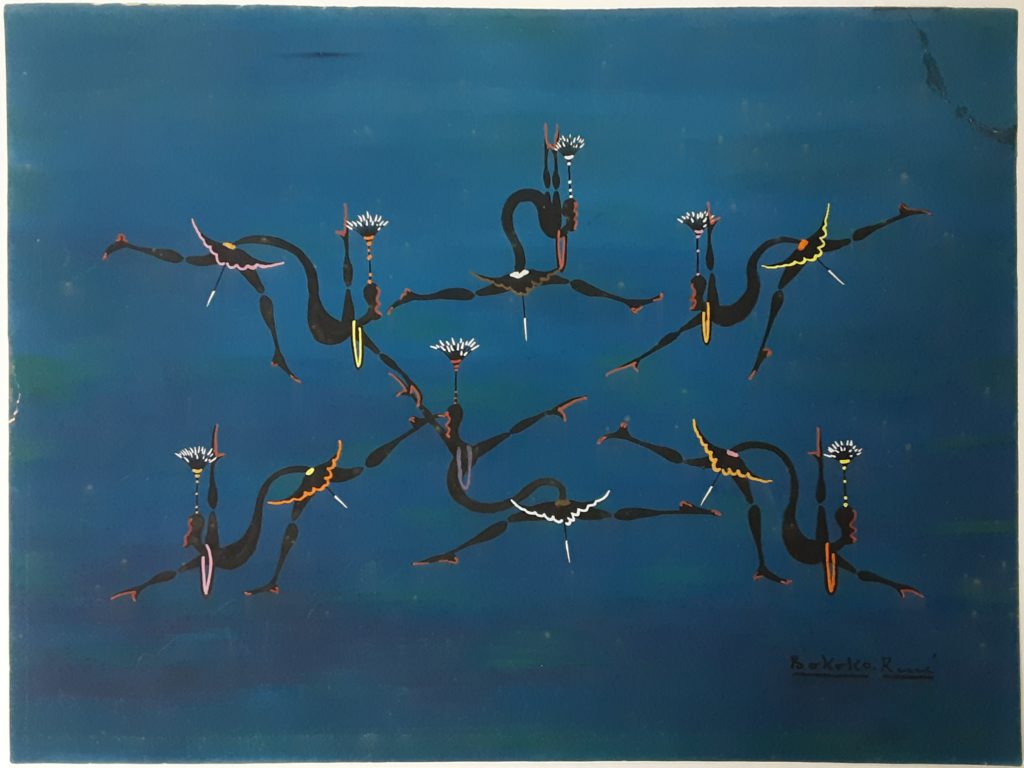
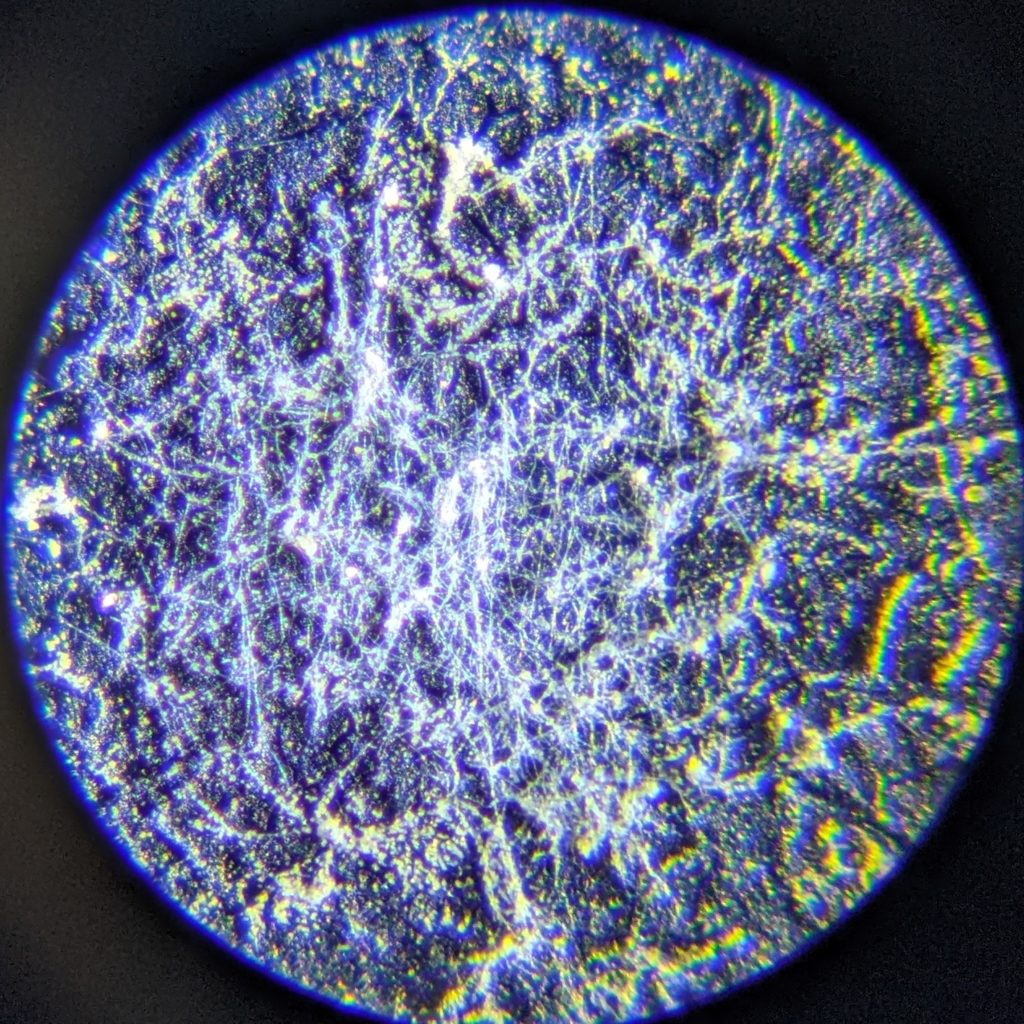
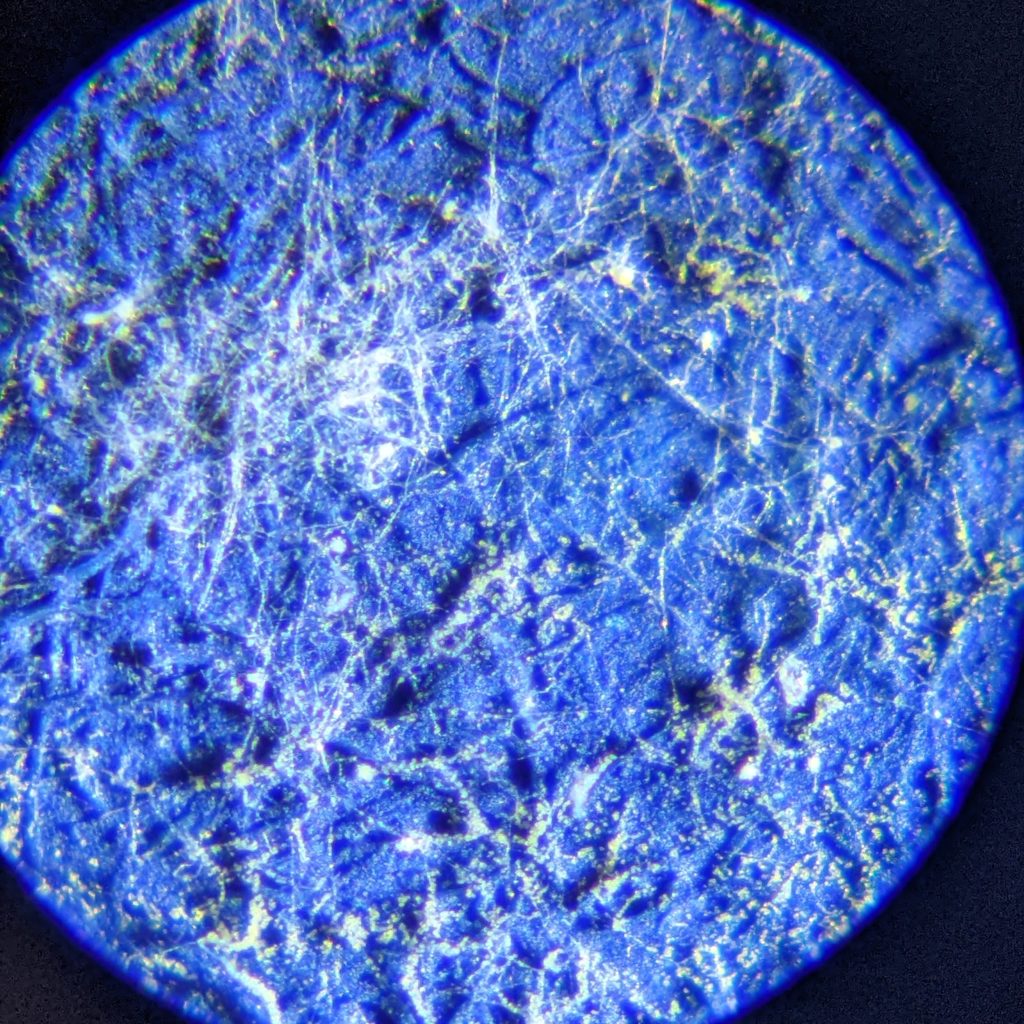
Prevention and Treatment
Mold growth can be best prevented by limiting the interaction of artworks with water and humidity. It is recommended to carefully dry any collections affected by a flood or fire damage in less than 48 hours if possible (paradoxically, fires often involve water damage as well). Controlling the ambient temperature and relative humidity will prevent the spread and growth of spores. Collections can also be frozen to prevent further damage through slow, uncontrolled drying, if a large number of water-logged objects need to be addressed. If mold has formed, conservators will deactivate it with ethanol or by lowering the humidity, and they can then remove the spores with a HEPA-filtered vacuum and a soft brush. The removal of all spores is important, since any remnants can become active and begin to spread again if the conditions become conducive to its survival. This is why it is important to contact a professional conservator to deal with any water-related condition issues. Mold can also be a health hazard if it is not handled correctly.
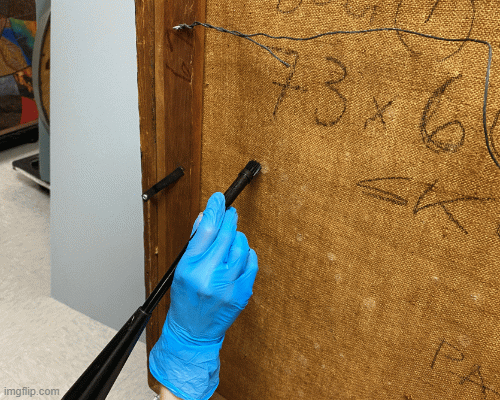
Mold being carefully removed from the back of a painting on canvas by Elizabeth Robson.
There are some simple ways to keep art protected from water, such as storing and displaying it away from any windows or water-containing pipes, and outside of high-humidity spaces like bathrooms or saunas. Adding backing boards to the reverse of paintings can help protect them from any water running down the wall behind them due to leaks. They will also slow down any changes in humidity and reduce any of its effects on the canvas or board support.
Using Water Safely

As mentioned above, conservators can indeed use water to treat artworks, including for cleaning paintings and washing paper. That’s right, paper can actually be safely submerged in water to improve its condition (see Paper and Water- Friends or Foes?). This process is only done after confirming that the media can handle the treatment without being negatively affected. For example, prints created with oil-based inks are usually safe to wash, while watercolors or colored pencil drawings are most likely not candidates for this type of treatment. Conservators will do lots of testing before proceeding with this level treatment, but it is often very successful for removing discoloration and tidelines. However, it should only be done by professionals!
Paintings conservators often use pH-adjusted water to remove dust, dirt, and grime from the surfaces of artworks. The example above shows the amazing results that can be achieved! Cotton swabs are hand-rolled and lightly dampened with the chosen aqueous solution, and any excess liquid is dabbed off. After a small area has been cleaned, it is rinsed using a swab dampened with distilled or pH-adjusted water. Bit by bit, the surface is slowly cleaned of any water-soluble materials. The details of this process vary from painting to painting, so a professional conservator should be contacted if you have a painting that you think needs to be cleaned.
References
Duncan, Emilie. “Paper and Water- Friends or Foes?” Mariners’ Blog, The Mariners’ Museum, 22 May 2020.
Klempan, B. 2016. Emergency Treatment of Water-damaged Paintings on Canvas. Canadian Conservation Institute (CCI) Notes 10/5. Last modified 2016.
“Category: Mold/Fungi.” AIC Wiki, American Institute for Conservation, 23 December 2020.
“Stabilizing Wet Paintings.” AIC Wiki, American Institute for Conservation, 21 November 2012.
Explore other articles like this
Art Spotlight: The Abandoned Hut by Mordecai Buluma
In this blog post Angie and Tashae discuss the symbolism behind The Abandoned Hut by Mordecai Buluma as well as the conservation treatment used to prepare it for exhibition.
Tricky Tape and Finicky Frames
In conservation, tape can be tricky! This post discusses the conservation treatment of the painting Recess Time at Farm by Akinola Lasekan.
Christ in the Manger: Virginia’s Most Endangered Artifact?
"Christ in the Manger" by Francis Musangogwantamu, along with nine other selected artifacts from other institutions in Virginia, will be featured in an online public voting competition, which will take place from February 20th to March 3rd, 2024. The artifact that receives the most votes will receive the People’s Choice award and a $1,000 grant to be put towards the object’s conservation treatment.

